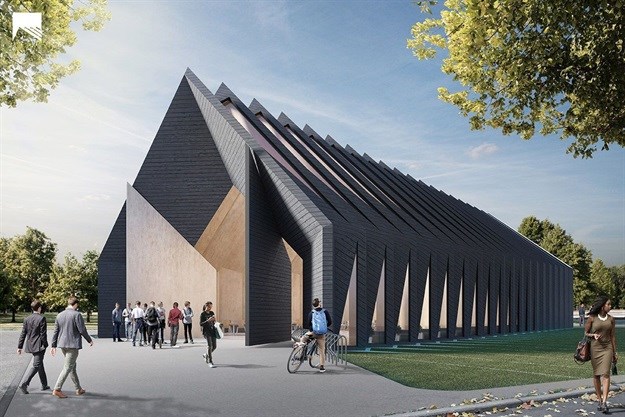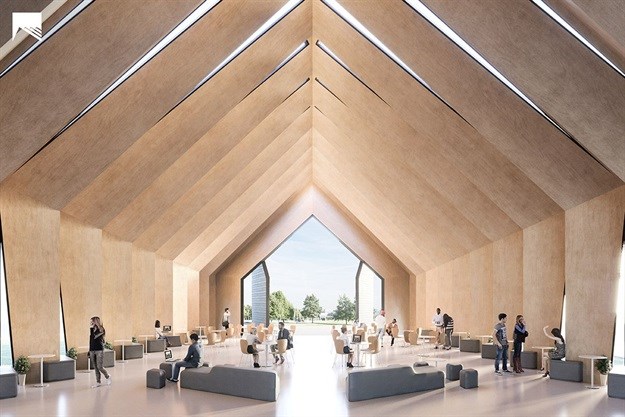MIT scientist creates multi-functional mass timber longhouse

Developed by a cross-disciplinary team from Mass Timber Design by MIT (Massachusetts Institute of Technology), the longhouse is designed as a multi-functional building, accommodating a range of event scenarios from co-working, exercise classes, social mixers, exhibitions, dinner gatherings and lectures.
Mass timber buildings
"Mass timber, a wood-based building design and construction technology, has received attention over the past few decades given its efficiency, speed, precision and versatility in construction for low to high-rise applications," said Klein, describing his project.
"Mass timber buildings are becoming more common throughout North America, most notably due to the technology’s environmental benefits and the potential impacts it can have on America’s forest health and restoration."

The longhouse is a building type common to historic settlements across the world and through history, finding use in the Americas, Asia, and Europe. Longhouses served many functions for these historic communities, but were almost always civic or multi-family in scale.
They were often places of community gathering, civil government, communal work, and an overall space for knowledge exchange. The MIT Longhouse is designed for shared communal spaces that builds upon this rich cultural icon.
Sustainable design
In order to achieve a large spanning high bay space for flexibility, the building is engineered as a series of timber-laminated veneer lumber arches spanning across the building’s shorter dimension. Each arch utilises a thin-walled triangular profile to minimise deformations in the structure and provide overall rigidity to the building.

The building design additionally integrates sustainable features to become an energy producer. The building orientation and the depth and angle of the sawtooth roof can be tuned for local solar conditions and natural daylighting needs. A low window to wall ratio with a highly insulated envelope allows for an energy efficient building. The project utilises computer numerically controlled manufacturing processes to enable a prefabricated modular system for efficient assembly.
Article originally published on World Architecture Community.